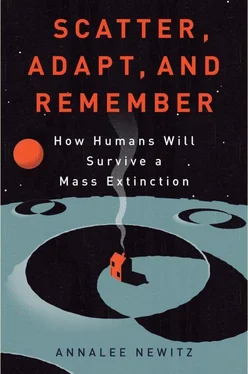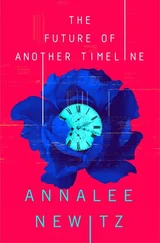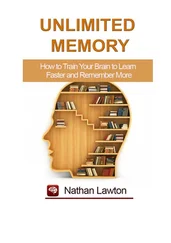The question, as always, is how to build based on what we know. Takhirov thinks the solution lies in the building code, which changes as new discoveries are made. But as Iverson explained, it’s not always easy to change cities that have already been built. All we can do in those situations is to make our cities “smarter.” That’s why engineers around the world are gathering all the data they can about disasters that might hit, in order to offer accurate predictions about when they’ll happen, and how to escape. Cities are more than buildings; they are the people who inhabit them. The philosophy of disaster science is that it doesn’t matter if our structures are damaged as long as people survive. Those people will come back to rebuild the city.
As we’ll see in the next chapter, engineers weren’t the first ones to come up with the idea of modeling urban disasters to save lives. It’s a strategy that works with pandemics, too.
16. USING MATH TO STOP A PANDEMIC
ENGINEERS WHO WANT to prevent natural disasters from destroying cities are still in the process of gathering enough data to predict dangers before they happen. But epidemiologists have been using predictive models for a century and a half. In the 1850s, a doctor named John Snow carefully mapped every incidence of cholera he could find in London, eventually determining that a single well was ground zero for the disease outbreak. It was the first great triumph of epidemic modeling, or using maps and data to figure out how infectious disease spreads through a city. Today, we have decades of data like Snow’s to help epidemiologists predict future paths of infection—hopefully stopping pandemics before they spread.
The next pandemic could start with viruses. Or bacteria, the way the Black Death did. It could even start with a bird or pig; with just the right combination of genetic material, a pathogen can jump from an animal into a human host. If the pathogen is infectious enough, the pandemic could kill 50 million people, the way the Spanish flu did in 1918. If it’s highly virulent, or develops resistance to treatment halfway through an outbreak, it could kill billions.
One of the most realistic pandemic scenarios in recent years came out of Hollywood, in a movie called Contagion . It offered a step-by-step look at how nations and health departments would respond to a viral outbreak, and how it would spread quickly via travelers all over the world. And—spoiler alert—it also gives us a very plausible scenario for the disease origin. A development company in China has been cutting down forests, displacing the local bat population. With no more natural habitat, the bats wind up nesting in barns full of pigs, and their virus-laced guano falls into the pig mush. Eventually a visiting American is exposed to one of the pigs, and she takes the virus with her back to the United States. Thus a pandemic virus is born, partly the result of human meddling in the environment, and partly the result of our cosmopolitan living arrangements.
So what are we going to do about it?
When planning to survive a pandemic, there are two basic questions: What is killing people, and how should we organize an international response to it that minimizes death and economic damage? Generally we can answer the first question in a laboratory—and often we can come up with a treatment and vaccine there, too. As difficult as it is to identify a killer microbe and come up with a way to fight it, it’s the second question that keeps scientists and policy-makers up at night.
Even if we manage to whip up a cure for the pandemic, it won’t do any good if we can’t get it to people in time. That’s why modeling possible pandemic-outbreak scenarios has become its own scientific subfield, combining everything from medicine and genetics to statistical analysis and game theory. Pandemic modelers are usually experts in mathematics, creating gamelike computer simulations to aid in predictions, as well as maps and charts representing how a pandemic might spread. They also draft charts of survival. The pandemic modeler’s goal is to figure out what groups like the World Health Organization (WHO) and local medical groups can do to intervene and change the odds. They answer questions about how much vaccine we would need to prevent a pandemic from infecting a small town and how much for a large city. Using known patterns of infection, they can figure out roughly how much a quarantine will slow the spread of a pandemic, and the minimum number of antiviral drugs a country should stockpile to prevent mass death.
We already have many of the medicines we need to kill pandemic diseases. But to stop the pandemic itself, we need math. We have to understand how a pandemic is likely to unfold across the globe, in many societies, before we can set up the best system for stopping it.
The medical surveillance state
Over 10 years ago, the U.S. government asked the CIA to work on pandemic prevention. Using the country’s most notorious spy agency to deal with a health-care issue sounds like a bizarre fit. But it is the perfect organization, because pandemics are prevented in part by using techniques borrowed from spying. Does that mean our survival is dependent on everybody enduring forced health checks every week during flu season? No. And it doesn’t mean the government will be snooping through your medical history either. Even if the CIA wanted to dig through everybody’s medical records, it would be impossible, because many people don’t have health insurance or receive regular checkups. The CIA helps medical organizations craft strategies for health surveillance, or the practice of gathering information about who is coming down with infectious diseases and where they are.
The World Health Organization (WHO) and other health-monitoring groups rely on a combination of sources for their health-surveillance data, including news stories about flu outbreaks and virus samples from all over the world sent to the WHO’s Global Influenza Surveillance and Response System. WHO scientists working with Google have also created Google Flu Trends, a system that monitors flu outbreaks by tracking the search terms that people are using in various regions. Google researchers discovered that when there was a significant uptick in people searching for words related to flu symptoms, like “sniffles” or “fever,” it was almost always followed by the Centers for Disease Control and Prevention (CDC) identifying a flu outbreak. Now the CDC and other agencies use Google’s data to figure out where the flu is breaking out, days before people start going to the doctor to report the symptoms they researched online. Like all forms of health surveillance, Google’s flu data is made as anonymous as possible. All we really need to know is how many people have flu symptoms in a specific region—we don’t need to know their names or their street addresses.
Though the CDC and the WHO are the organizations we think of first when it comes to containing a pandemic, the greatest asset in any surveillance network is always your local health department, where the signs of an outbreak are going to be registered first. David Blythe manages health surveillance for the Maryland public-health department, which coordinates with dozens of regional health departments in the state to track what are called flu-like symptoms. Blythe said that one of the main ways the CDC tracks potential outbreaks is with a volunteer network called ILINet (for Influenza-like Illness Surveillance Network), a volunteer effort by local doctors, nurses, and other health-care workers who report any infectious, flu-like symptoms they see cropping up in patients. It’s key that they report symptoms rather than trying to diagnose what they’re seeing, since one of the main things ILINet is designed to catch is a new, deadly flu strain. If one arises, its collection of symptoms may not match any known illness. Every week, analysts with ILINet pore over the data, looking for suspicious patterns. What’s crucial here is that this health surveillance is happening on a city-by-city basis. Pandemics always start in one place, as John Snow found with the cholera-infected well in London. In other words, when the next big pandemic starts brewing, city health-care workers are going to notice it long before national and international agencies do.
Читать дальше






![Аннали Ньюиц - Автономность [litres]](/books/424681/annali-nyuic-avtonomnost-litres-thumb.webp)





